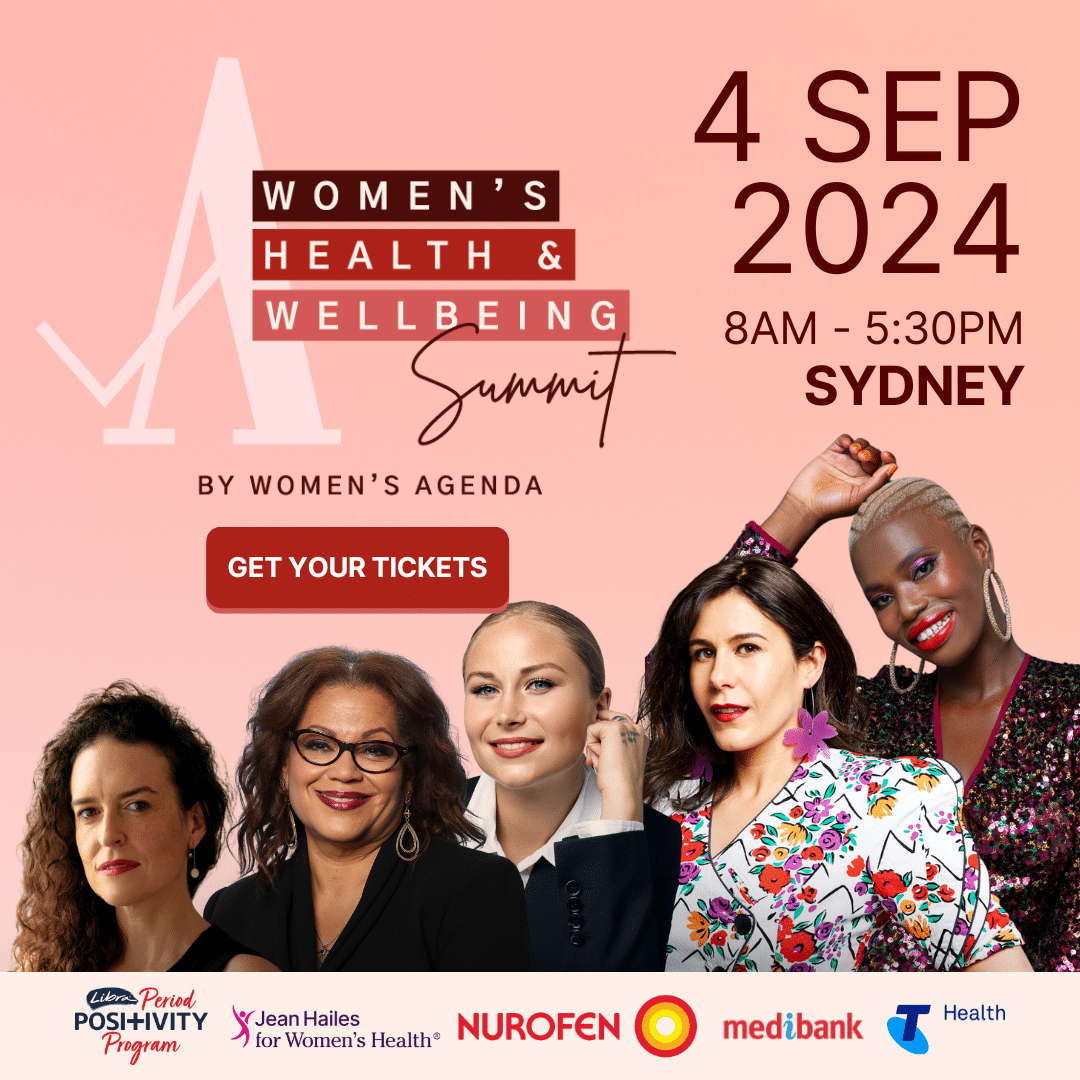Women have high ambitions in the workplace, but following the impacts of the pandemic, many are experiencing increased burnout, discrimination and loss of visibility due to remote and hybrid work.
While 36 per cent of women are looking to earn more income in the next two years, 34 per cent say caring responsibilities for their children could hinder their ambitions over this time period.
And burnout is rampant as 77 per cent of women believe they have already experienced its effects in the past 12 months.
These statistics come from the latest survey by Women’s Agenda, where 1100 women were asked about their key ambitions and how conditions in their workplace are impacting their career goals.
“The pandemic posed very difficult for all of us– male and female– but you can see that females are experiencing more symptoms and having more issues,” says the Senior Deputy Dean at UNSW Business School, Professor Karin Sanders, speaking to the findings in the Ambition Report.
One of these issues is a lack of visibility for women in the workplace on account of the gender imbalances associated with hybrid work.
The report shows that while 42 per cent of Australian women engage in hybrid or remote work, 37 per cent say their lack of visibility to management is hindering their career. And 16 per cent suggest it’s affecting their chances of promotion.
“Hybrid work will not disappear because if you have a look at the labour market, people nowadays want to work hybrid,” says Sanders, adding that the issue lies in the difference of how many days men and women are choosing to go into the office.
She says men typically go into the office three out of five days, whereas women often go only two days a week in order to take on more of the caring responsibilities at home– something Sanders notes is itself unequal.
Additionally, while a two to three day difference may not seem like much, Sanders says it actually is, considering that this disparity means men are more visible to management– a factor that can lead to women being looked over for promotional opportunities.
Women are also reporting that they’ve been discriminated against in the workplace for needing to work flexibly or part time, with 57 per cent of survey respondents saying they’ve taken time out of work to raise children in the past 10 years.
Rehabilitation medicine and pain physician Dr Olivia Ong says she sees this happen a lot in medicine, especially for female doctors who want to pursue very male-dominated specialties, like surgery, but find pushback when they want to have kids and start a family.
“A lot of my female colleagues are starting to be very vocal about this and standing up for themselves and also their specialty in general,” says Dr Ong, adding that collective voices are key to raising awareness to those turning a blind eye to the issue.
She also notes that acceptance of raising children and working flexibly in traditionally male-dominated careers is the next important step.
“The transition from awareness to acceptance can be challenging because of [people’s] beliefs, unconscious biases and their own patriarchal nature,” says Dr Ong, but she thinks a good starting point is for employers and people advocating for change to have that conversation.
This discussion is even more impactful for Indigenous women, as the report shows women in this population with caring responsibilities are more likely to feel unsafe at work and less supported. The findings also show that racial discrimination is ranked quite highly as a barrier for women in achieving their ambitions.
Digital producer and journalist at NITV Bronte Charles says this barrier resonates with her as a young Aboriginal journalist.
“There’s not a lot of representation, particularly black women, in the media space and you can’t really be what you can’t see,” says Charles.
“Representation has definitely impacted my confidence– not hearing from people who look like me.”
“It is really interesting to see that racial discrimination is such a high barrier in the report because I feel that it’s real, and I think it’s affecting young Aboriginal women entering the workplace because for most of us, we’re the first in our families to go to universities and take up these spaces.”
You can check out the full report here.
.

